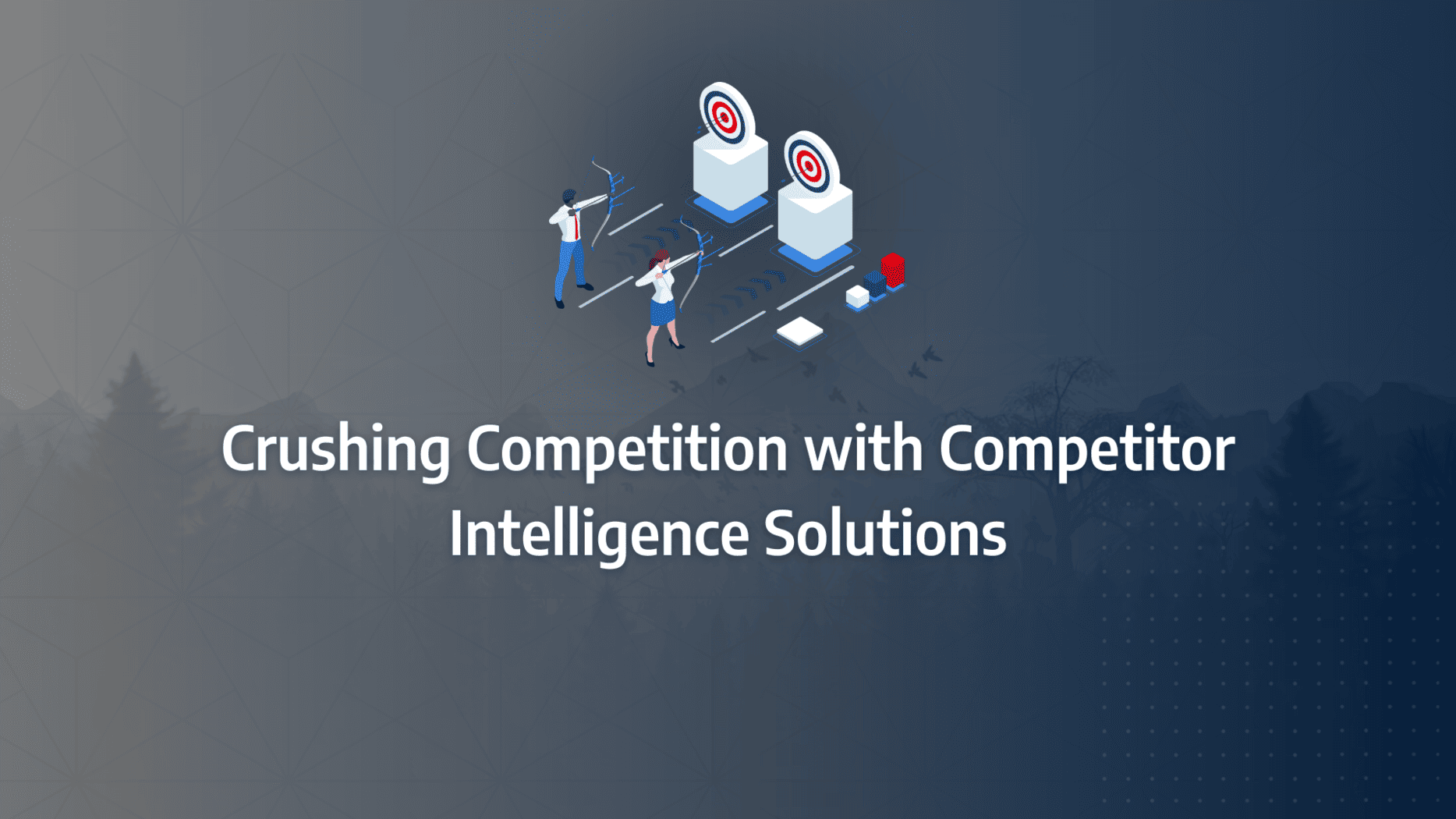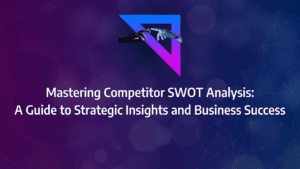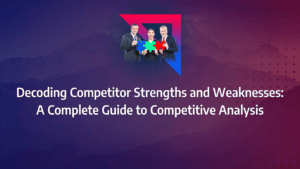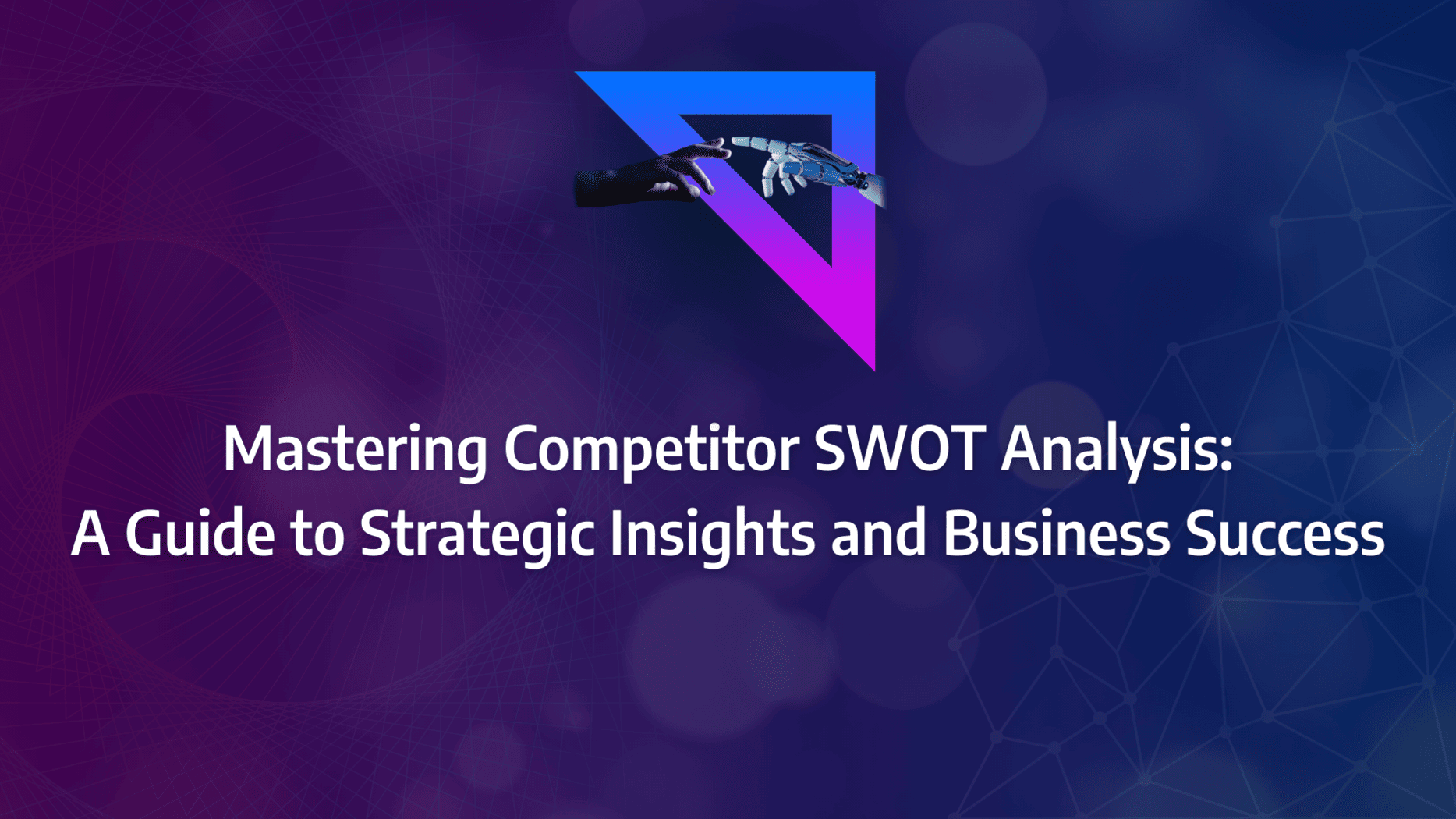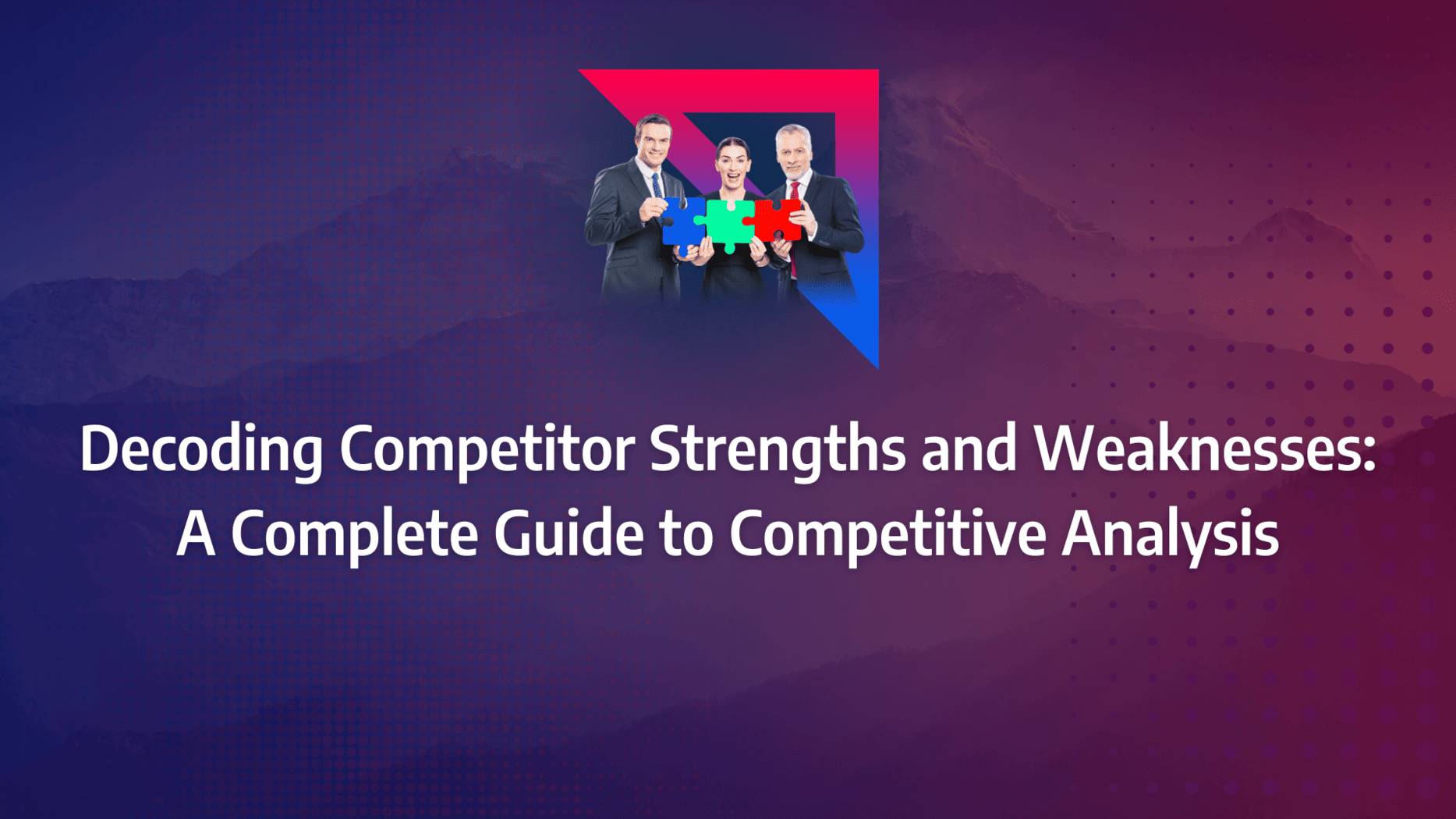Staying ahead of your rivals is no longer just an advantage—it’s a necessity. Yet, as markets evolve rapidly and competitors become more agile, keeping up with their every move can feel overwhelming. But what if you could anticipate your competitors’ strategies, pivot before they do, and outmaneuver them at every turn?
This is where competitor intelligence solutions come into play. By leveraging these powerful tools, you can transform raw data into actionable insights, enabling you to make informed decisions that put your business at the forefront.
In this post, we’ll explore how you can harness competitor intelligence to not just survive, but thrive in today’s cutthroat environment, ensuring you remain one step ahead—always.
- Leverage Competitive Intelligence Tools: Implement a variety of tools and methodologies to gather and analyse competitor data, ensuring your strategies are always based on the latest insights.
- Transform Data into Actionable Insights: Use competitor intelligence to turn raw data into strategic decisions that drive your business forward, making you a proactive leader rather than a reactive follower.
- Prioritise Intelligence Initiatives: Align your competitive intelligence efforts with your broader business objectives to ensure they contribute directly to your company’s success.
- Stay Agile: By continuously monitoring your competitors, you can quickly adapt to market changes and new threats, maintaining your competitive edge.
- Adopt a Systematic Approach: Establish a structured process for competitive analysis, including selecting the right tools, defining key metrics, and creating effective reporting mechanisms.
- Drive Strategic Decision-Making: Use the insights gained from competitor intelligence to inform your strategic planning, ensuring your business stays ahead in a rapidly evolving market.
What is the role of competitive intelligence in shaping marketing strategies?
Competitive intelligence is essentially ‘spying on the competition’ to understand their strategies, approaches, and the factors driving their success. It involves a company’s efforts to collect and investigate data within its business environment. Businesses should develop competitive intelligence solutions across various operational areas, including:
- Website technology
- Paid-for search marketing (PPC)
- Social media strategy
- Customer service
- Content strategy
- Advertising strategy
The primary purpose of gathering and analysing this information is to create processes that help the brand develop winning and competitive marketing strategies.
Importance of Gathering Competitive Intelligence
Gathering competitive intelligence is crucial for any business operation because:
- Market Dynamics Awareness: It helps improve awareness of market dynamics and whether the brand is ahead or being outperformed by the competition.
- External Business Environment Knowledge: It aids in creating marketing strategies that support the brand’s long-term goals.
- Risk Assessment: Brands can assess risks by understanding market happenings.
- Opportunity Analysis: It identifies tactics ignored by competitors that can be used to promote the brand.
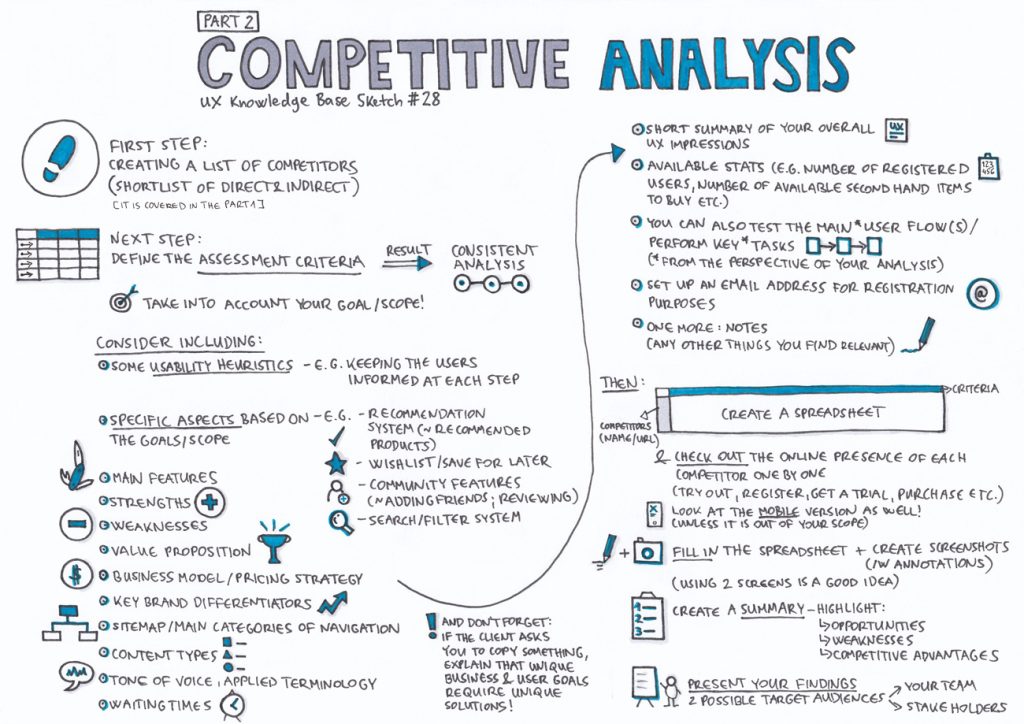
Types of Competitive Intelligence
Companies use two types of competitive intelligence:
- Strategic Competitive Intelligence: Helps companies understand and act on long-term challenges, such as technological changes, marketplace dynamics, and environmental shocks.
- Tactical Competitive Intelligence: A short-term process contributing to decisions measurable in quarterly reports, such as increasing profits or protecting market share.
The real distinction in using competitive intelligence lies in its application. While the majority of companies collect competitive intelligence, only about half use it to inform business decisions effectively. Many companies use competitive intelligence merely to confirm decisions already made, which may shield decision-makers from the fallout of poor choices but does little to foster good decision-making.
Examples of Effective Competitive Intelligence
There are several recurring themes in companies where competitive intelligence has significantly impacted operating results:
- Analyst Authority: Competitive intelligence analysts having sign-off authority on major business decisions focus on presenting actionable insights rather than just delivering PowerPoint slides. This is a key differentiator for successful organisations.
- Proactive Reporting: Successful companies use competitive intelligence proactively to respond to changing business conditions rather than reactively.
- Product Launch Planning: Competitive intelligence is integral in planning product launches, providing insights into potential reactions from regulators, issues with distributors, and the influence of social media.
By following these practices, businesses can leverage competitive intelligence solutions to maintain a competitive edge and drive growth.
What Matters Most?
Emphasising storytelling in competitive analysis can create a compelling narrative that showcases your brand’s unique strengths. Clients often discover that developing a unique value proposition is crucial for differentiating their offerings from competitors. Typically, establishing a competitive intelligence team for continuous monitoring helps organisations stay informed and agile in their market strategies.Get In Touch
How do I effectively gather competitive intelligence data?
Gathering data for competitive intelligence necessitates a significant investment of time and effort from brands. This process can include activities ranging from observing a rival retail store to monitoring a competitor’s advertising efforts. Here’s a detailed guide on how to effectively collect and utilise competitive intelligence solutions.
Plan Metrics and Goals
The foundation of any effective competitive intelligence solution lies in clearly defined goals and metrics. Brands should consider the following:
- Identify Competitors:
- Brands need to have a comprehensive understanding of their competitors. This involves regularly researching and listing competitors, as new players frequently enter the market while others exit. Competitors excelling in their marketing strategies are likely to dominate the market.
- Analyse the Industry:
- To identify the best competitive intelligence solutions, a thorough understanding of the industry is essential. For instance, if competitors are frequently discussed online, social media monitoring becomes crucial.
- Different industries require different approaches. While a local café might benefit greatly from Facebook marketing, a global clothing brand might not. Thus, understanding industry-specific dynamics is key to defining what “success” looks like for your brand.
- Set Relevant Metrics:
- Data varies between businesses, so once the necessary data is gathered, the next step is setting appropriate metrics. Most brands working on competitive intelligence solutions have established KPIs, which serve as a good starting point. For example, if a brand focuses on website traffic, it should break down data by platform to better understand these metrics.
Positioning and Messaging Changes
Understanding how competitors define and communicate their unique value propositions is critical. Staying updated on these changes is essential to differentiate your product effectively.
- Monitor Competitors’ Websites: Competitors’ homepages and product pages are prime places to observe changes in their value propositions. Any adjustments made to these areas reflect shifts in their core messaging and should be analysed promptly to avoid being blindsided.
Leadership Changes
Keeping track of executive leadership changes within your competitive landscape can provide insights into potential strategic shifts.
- Track C-Suite Movements: For example, if a rival hires a new SVP of Sales, this could signal a strategic focus on enhancing their sales capabilities. Similarly, a sudden departure of a Chief Product Officer might indicate internal challenges or shifts in product strategy.
Content Updates
Monitoring competitors’ content updates is crucial, especially when they expand to new customer segments or buyer personas.
- Analyse Content Strategy: If competitors start targeting new customer segments without your knowledge, it can significantly impact your market share. Observing the subject matter of their content can provide insights into their buyer personas and help you adjust your strategy accordingly.
By implementing these strategies, brands can leverage competitive intelligence tools to stay ahead of the competition and make informed decisions that drive growth.
What tools can help analyse my competitors’ online presence?
To stay ahead in the fast-paced business landscape, brands must utilise the right competitive intelligence tools. These tools provide valuable insights into competitors’ digital marketing tactics, including SEO strategies, social media engagement, content marketing efforts, and advertising approaches.
Open SEO Stats
Open SEO Stats is a free Chrome browser extension that allows brands to gather comprehensive data on a competitor’s domain. With this tool, brands can review Quantcast, Alexa, and Compete rankings, providing an overview of the competitor’s backlink profile and the total number of pages on their website. It is invaluable for businesses aiming to benchmark their website against competitors.
BuzzSumo
BuzzSumo offers both free and paid services to help brands identify the best-performing content related to their topic. By using BuzzSumo, brands can discover which content drives the highest engagement for their competitors. For content marketing, BuzzSumo is an essential tool, with monthly prices ranging from $99 to $699.
Kompyte
Kompyte enables brands to compare referrals, traffic, visitor behaviour, search rankings, social metrics, and paid ads. This tool tracks performance based on keywords, making it easier for brands to analyse their competitive landscape. Kompyte’s services start at a monthly rate of $95.
SimilarWeb
SimilarWeb provides analytics for competitors’ websites and mobile apps. Brands can see referral sources, track traffic numbers and origins, and understand engagement metrics. This tool also offers insights into relevant content ideas and partnership opportunities, helping brands understand their competitors’ audience more effectively.
Pi Datametrics
Pi Datametrics allows brands to measure their marketing campaign impact against competitors. This tool provides useful information on audience intent and emerging trends, helping brands to identify optimal timings and messages for their campaigns.
SEMRush
SEMRush offers insights into which keywords and site links are performing well for competitor websites. It is particularly beneficial for brands looking to enhance their pay-per-click strategies, providing estimates for keyword rankings. SEMRush is available as a free tool, with additional features offered in paid monthly plans ranging from $99 to $399.
BuiltWith
BuiltWith enables brands to see every programme running on a competitor’s website. This tool is particularly useful for understanding how a competitor manages their site. Information provided includes content management frameworks, email integration, and advertising partners. By using BuiltWith, brands can gain insights into a competitor’s website infrastructure and apply these learnings to improve their own sites.
iSpionage
iSpionage provides insights into competitors’ search marketing tactics by identifying the keywords they are successfully ranking for. It features a Keyword Effectiveness Index (KEI) to pinpoint which keywords a brand should focus on. Furthermore, it analyses competitor ads, showing which ones perform best. This data enables brands to replicate effective tactics. iSpionage offers a free version, with additional features available in the paid plans, which range from $29 to $299 per month.
Searchmetrics
Searchmetrics is a powerful tool for improving a brand’s SERP rankings. It offers various paid options that provide detailed information on SEO visibility and search engine rankings. Brands can add competitors to see a comparative performance analysis, helping them to adjust their SEO strategies accordingly.
Feedly
Feedly is ideal for brands that want to stay updated with the latest industry news. It allows users to segment the sites they follow based on industry trends, competitors, and clients. For $5.41 per month, users can get a pro account that enhances their ability to monitor the latest content efficiently.
Ahrefs
Ahrefs is a top-tier tool for SEO and keyword research. It enables brands to see what keywords competitor sites are ranking for, how much organic traffic they generate, and which content performs best. Ahrefs also highlights content gaps, tracks specific keyword performance, and provides keyword information for sites like Amazon, Baidu, and YouTube.
What are common pitfalls to avoid in competitive intelligence?
Navigating the landscape of competitive intelligence can be fraught with challenges. Here are some common pitfalls and strategies to avoid them, ensuring your competitive intelligence solutions are effective and up-to-date.
Decentralised Competitive Intelligence
In many businesses, information about competitors is shared informally—via Slack messages, forwarded emails, or during Zoom calls. Unfortunately, this fragmented approach often leads to valuable insights being lost in the abyss.
Failing to capture these insights within a single source of truth diminishes the reliability and currency of your competitive intelligence. Consequently, your sales representatives may end up scouring for insights themselves, resulting in inconsistent and possibly inaccurate one-pagers or battlecards.
Competitive Intelligence Requests at Critical Deal Stages
It’s not uncommon for sales teams to request competitive insights at the eleventh hour. While last-minute requests are inevitable, they are not inherently problematic. Providing deal support is a crucial value add that successful competitive programmes at companies like Salesforce, Slack, and Highspot excel in.
However, training your sales team to handle competitive scenarios and objections in advance significantly enhances your business’s ability to outmanoeuvre competitors. Proactive preparation is key.
Reactivity to Competitors
If your revenue teams are constantly on the defensive against competitors, it signals a fundamental issue with your competitive intelligence solutions.
Here are four strategies to transform a reactive stance into a proactive one:
- Onboarding Modules: Develop a comprehensive module during onboarding to provide revenue teams with a foundational understanding of the competitive landscape.
- Open Office Hours: Host regular open office hours where anyone in the business can discuss competitive questions or deals.
- Scheduled Sessions: Collaborate with sales leadership and enablement to ensure regular competitive enablement sessions with representatives, ideally on a monthly basis.
- Competitive Intelligence Newsletter: Launch a newsletter to keep teams updated on the latest developments with competitors and explain why these updates matter.
By addressing these common pitfalls and implementing these strategies, your competitive intelligence solutions will be more cohesive, reliable, and actionable, giving your business a decisive edge in the market.
Our Tactical Recommendations
From our experience, investing in marketing technology that provides comprehensive competitor analytics can deliver real-time insights that are invaluable for strategic decision-making. Clients often discover that developing a competitive matrix helps visualise strengths and identify new opportunities effectively. Additionally, using SEO comparison tools enables targeted content creation that keeps you ahead of competitors in search visibility.Get In Touch
Steps in Designing a Successful Competitive Intelligence Solution
Creating an effective competitive intelligence solution involves several crucial steps. Here’s a comprehensive guide to designing a strategy that ensures your brand stays ahead of the competition.
Identify Your Competitors
Begin by listing all your competitors, focusing initially on the top five direct competitors. It is also beneficial to recognise indirect competitors and emerging brands within your industry. While indirect competitors may not compete for your customers directly, they are significant players whose strategies can provide valuable insights. Emerging competitors, on the other hand, can offer innovative approaches and inspirational marketing strategies that can be adapted to your own tactics.
Determine Areas of Interest for Tracking Competitor Movements
Once you have identified your competitors, the next step is to analyse their digital movements. Focus on specific areas relevant to your strategy to avoid being overwhelmed by the sheer volume of available data. Narrowing down to the most pertinent information ensures that the data you collect aligns closely with your current tactics and objectives.
Gather Data
Data collection is one of the most intensive aspects of the competitive intelligence process. This step involves a thorough review of your competitors’ online presence, including their products, teams, social media activities, website content, and more. Comprehensive data gathering is essential for a holistic view of the competitive landscape.
Prepare a Competitive Analysis
The initial phase of data analysis involves breaking down the gathered information to extract critical trends and key insights. Organise these findings to facilitate easy communication within your organisation. Competitive analysis can be conducted in various ways:
- Benchmark or Baseline Analysis: Compile data to create a detailed competitor profile, which can be stored in a centralised document for ongoing reference.
- Ongoing Analysis: Continuously track competitors by setting up alerts for their activities. This proactive approach helps your brand stay ahead of market changes and competitive moves.
Communicate Results
After gathering and analysing the data, it is vital to communicate the results to key stakeholders within your organisation. Clear and effective communication ensures that everyone understands the competitive landscape and can contribute to strategic decisions.
Prepare Actionable Goals
Finally, the insights derived from your competitive intelligence solutions must be translated into actionable goals. Use the findings to inform and refine your marketing strategy, ensuring that the data serves a practical purpose and drives your brand’s success.
By following these steps, brands can develop robust competitive intelligence solutions that provide a strategic advantage in the marketplace. Each step, from identifying competitors to preparing actionable goals, is essential for creating a cohesive and effective competitive intelligence strategy.
